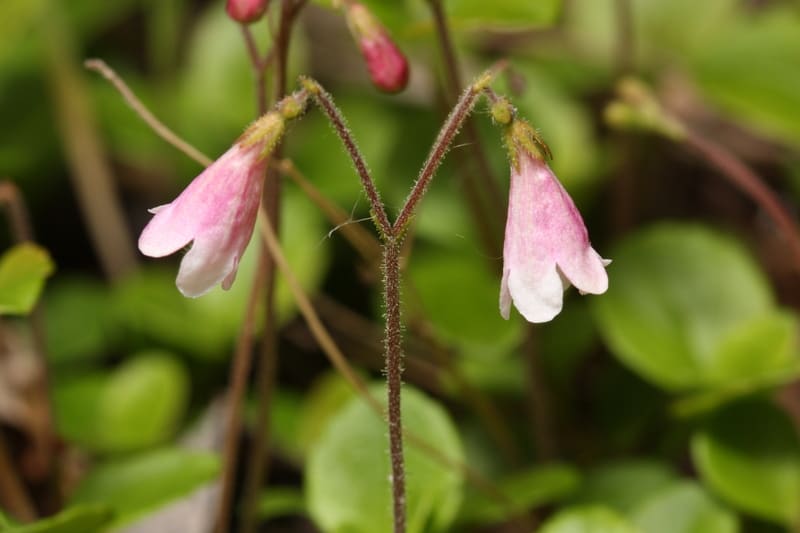Twinflower, Linnea, American Twinflower, European Twinflower
Linnaea borealis

🌿 Morphology
🌞 Growing conditions
🌍 Origin and family
🌾 Uses
Warning: Despite the care taken in writing this sheet, it is essential to cross-reference sources before using or consuming any plant. When in doubt, consult a qualified professional
Permaculture uses
Twinflower is primarily an ornamental groundcover in permaculture designs. It provides visual appeal with its delicate flowers and evergreen foliage. While not typically consumed, it's sometimes used in herbal teas or as a flavoring agent, though caution is advised due to potential toxicity in large quantities. It is valuable for attracting pollinators to the garden. There are no particularly notable subspecies or cultivars for permaculture use.
Permapeople description
Linnaea borealis, commonly known as twinflower, is a creeping evergreen dwarf shrub. It is characterized by its delicate, bell-shaped pink flowers that grow in pairs. It is found in boreal and subarctic regions of the Northern Hemisphere.
Botanical description
Linnaea borealis is a low-growing, perennial evergreen dwarf shrub. It has slender, creeping stems that root at the nodes, forming mats. The leaves are small, opposite, and ovate with crenate or serrate margins. The flowers are borne in pairs on erect, slender peduncles, hence the name 'twinflower.' Each flower is bell-shaped, pink or white, and fragrant. The fruit is a dry achene. It thrives in cool, moist, acidic conditions in coniferous forests.
Companion planting
Linnaea borealis thrives in the company of other acid-loving plants commonly found in coniferous forests, such as blueberries, rhododendrons, and ferns. It can be used as a groundcover beneath taller shrubs and trees. No specifically unfavorable plant associations are documented.
Propagation methods
Propagation is typically achieved through division of established mats, stem cuttings (difficult), or seeds. Seed germination can be challenging and requires stratification. Division is the most reliable method for home gardeners.
History and traditions
Linnaea borealis was the favorite flower of Carl Linnaeus, who adopted it as his personal emblem and used it extensively in his work. It has a history of use in traditional medicine by various indigenous groups for its astringent and anti-inflammatory properties. It was often used to treat skin conditions and sore throats. In some cultures, it symbolizes humility and remembrance.
Usage calendar
Flowering typically occurs in summer (June-August). Planting is best done in spring or fall. Pruning is usually not necessary, but light trimming can be done after flowering to maintain shape.
